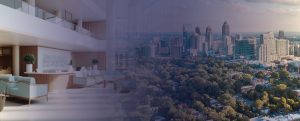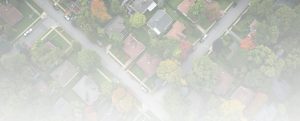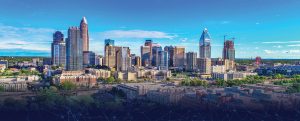Brooklyn’s Revival
Overview of Brooklyn
Brooklyn, the most populous borough of New York City, has over 2.7 million residents, making it one of the most diverse urban areas not only in New York City but in the United States. Spanning approximately 70 square miles and consisting of more than 100 distinct neighborhoods, Brooklyn’s population is home to many ethnic communities.
The market’s robust economy has a workforce of just under 1.65 million individuals and median annual earnings of $76,912. This year alone, Brooklyn has seen over $51 billion in transaction volume across all sectors.
Brooklyn’s unique neighborhoods, from the historic brownstones of Bedford-Stuyvesant to the bustling streets of Downtown, reflect the borough’s rich history and ongoing evolution as a center for arts, business, and innovation. Brooklyn’s cultural scene is just as important, with attractions like Coney Island attracting over 3 million visitors annually and the Brooklyn Museum bringing in more than half a million people annually. This blend of rapid development, historical preservation, and cultural richness makes Brooklyn a lively reflection of New York City’s growth.
Brooklyn’s Recovery and Growth Post-Pandemic
Much like the rest of NYC, Brooklyn has bounced back and grown to new heights as it recovers from the challenges following the COVID-19 pandemic. The borough has seen significant increases in population, employment recovery, and other socio-economic metrics.
Brooklyn’s mixed-use sector has proven to be the same. Mixed-use developments, which combine residential, retail, and office spaces, are essential for urban revitalization, catering to the needs of both residents and businesses. In recent years, Brooklyn’s retail districts have been going through a monumental shift. City-led rezoning initiatives in neighborhoods like Gowanus, alongside a growing demand for versatile urban spaces, have fueled new mixed-use projects. These mixed-use projects are the answer to a much-needed cohesiveness between residents and businesses.
The “Whys” Behind Brooklyn’s Mixed-Use Boom
Several factors are contributing to the rising interest in mixed-use projects in Brooklyn, capturing the attention of investors, developers, and local community members.
Population Increase & Demographics
Brooklyn has become a hot spot for young professionals, creatives, and millennials seeking a dynamic urban lifestyle. Downtown Brooklyn, transformed from a commercial center to a new, 24-hour district, attracts residents and businesses with its infrastructure. Its endless cultural offerings and a strong sense of community attract those who value aesthetics, convenience, and walkability. These residents are drawn to neighborhoods that allow them to live, work, and socialize without long commutes. The demand for these developments aligns perfectly with millennials’ preferences for a balanced and integrated lifestyle.
Cultural Renaissance
Brooklyn is undergoing a cultural renaissance driven by a resurgence in the arts, entertainment, and culinary scenes. Neighborhoods like Williamsburg and Bushwick are home to a community of artists, galleries, and creative spaces. Williamsburg’s trendy shops, dining spots, and artistic venues appeal to young professionals, while DUMBO’s historic charm and industrial style draw tech startups and creatives. Greenpoint, evolving from its industrial roots, now hosts a dynamic arts scene. Additionally, Brooklyn’s diverse food scene, which reflects its multicultural population, has drawn hundreds of thousands to the borough with its new restaurants and food markets.
Environmental and Sustainability Goals
New York City legislation has implemented many programs and incentives for developers to create projects that promote sustainability and eco-conscious developments. These projects, such as the NYC Energy Efficiency Financing Program, Green Fast Track, Future Housing Initiative, and others, can grant developers low-interest loans, tax incentives and abatements, and other benefits to promote creating these projects.
Estimated Total New Mixed-Use Units by 2026
Many large-scale projects are planned for completion by 2026. Brooklyn is projected to deliver approximately 5,000 to 6,000 new mixed-use residential units. This estimate accounts for both market-rate and affordable housing units alongside commercial spaces. Below are some notable completed and soon-to-be-completed mixed-use projects.
Recently Completed and Emerging Mixed-Use Projects
1. Caton Flats:
Completed in 2023, this 276,288-squarefoot project on Flatbush Avenue includes 255 affordable housing units, a Caribbean marketplace, and commercial facilities, highlighting the importance of preserving cultural heritage while addressing housing needs.
2. 175 Third Street, Gowanus
This project includes 815 residential units (244 affordable) and extensive commercial and green spaces. It is slated to span 647,000 square feet, including 509,000 for residential use and 138,000 for commercial, making it one of the most expansive mixed-use sites to break ground in the last five years.
3. 589 Fulton Street, Downtown Brooklyn (“The Brook”)
A 51-story tower developed by Witkoff and Apollo Global Management featuring 591 apartments (170 affordable) and 30,000 square feet of retail space.
4. Sackett Place and Society Brooklyn, Gowanus
This waterfront development in Gowanus features two towers with 517 housing units (130 affordable) and 10,000 square feet of retail space.
5. 16 Dupont Street, Greenpoint
A 40-story tower by Rockefeller Group and Park Tower Group, offering 378 residential units (109 affordable) and additional retail space.
Advantages of Investing in Mixed-Use Projects
For investors and developers, mixed-use projects offer many benefits, making them attractive long-term investments.
Increased Occupancy
Mixed-use developments often enjoy higher occupancy rates due to their comprehensive amenities. Residents are drawn to the convenience of nearby shops, dining, and entertainment. At the same time, businesses benefit from the steady flow of residents and office workers. This level of accessibility makes mixed-use projects appealing, resulting in more reliable occupancy and tenant retention.
Multiple Revenue Sources
A key advantage of mixed-use projects is the potential for diverse revenue streams. By combining residential rents, commercial leases, and retail sales, these assets generate multiple income sources, reducing the impact of downturns in any single sector. This diversification offers greater stability, allowing developers and investors to manage risks while achieving consistent returns.
Enhanced Property Value
Mixed-use projects boost the value of surrounding properties and neighborhoods, increasing the area’s overall attractiveness. These developments create an environment appealing to new residents and businesses, leading to higher demand and property values. This increase benefits not only developers but also the community, as improved infrastructure and amenities enhance the quality of life.
What’s Next for Brooklyn’s Mixed-Use & Retail Scene
Mixed-use projects signify a new chapter for Brooklyn’s shopping areas, creating sustainable and economically vibrant communities. As demand rises due to population growth, urbanization, and changing lifestyles, these developments reshape how people live, work, and shop in Brooklyn.
By fostering neighborhood-focused spaces that balance convenience with experience, mixed-use projects rejuvenate Brooklyn’s retail environment and set a model for future urban development. For developers and investors, these projects offer stable, long-term returns while enhancing the sustainability and community spirit of one of New York’s most dynamic boroughs. As mixed-use projects continue to shape the future, Brooklyn’s retail resurgence promises to blend tradition, innovation, and community spirit, defining the next era in the borough’s rich history.
Brooklyn’s mixed-use development landscape is rapidly expanding, driven by strategic urban planning, substantial investments, and a strong demand for residential and commercial spaces. While the exact number of new units may continue to evolve as projects progress, the borough is poised for significant growth. This, in turn, enhances its status as a vibrant and dynamic part of New York City.









